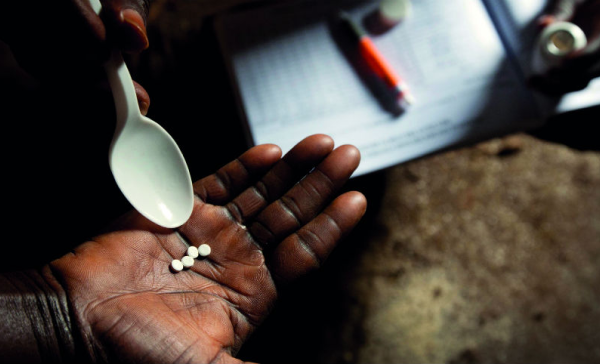Mitigates resistance
New insecticide
Greater impact
Critical update
Insecticide-treated mosquito nets have played a major role in the massive declines in malaria achieved between 2000 and 2015. Mosquito nets and indoor residual sprays together prevented nearly 80% of the 663 million malaria cases averted in sub-Saharan Africa over that period.
However, mosquitos have developed increasing resistance to the pyrethroid class of insecticides used on standard mosquito nets, reducing the nets’ performance in many settings.
Next-generation mosquito nets combine two distinct classes of insecticide to reinforce protection, chlorfenapyr and pyrethroids. When the mosquitoes land on the net, even if they have developed resistance to the first class of insecticide, they are killed by the second.
The new chlorfenapyr-pyrethroid mosquito nets have shown to reduce malaria infections by nearly half among children under ten years old compared to standard pyrethroid-only nets. Insecticide-treated nets serve a dual purpose: they create a physical barrier that protects those sleeping under them, while insecticides work to kill the mosquitoes, dramatically reducing malaria transmission in affected communities. This means that if part of the community is protected by an insecticide-treated net, even those without direct access benefit from the intervention.
Following review of evidence generated through the joint Unitaid-Global Fund New Nets Project, led by the Innovative Vector Control Consortium (IVCC), and other research, the World Health Organization (WHO) issued a strong recommendation for pyrethroid-chlorfenapyr nets to be deployed instead of pyrethroid-only nets for preventing malaria in areas with pyrethroid resistance. By issuing this recommendation, WHO provided a market entry point for other new types of nets treated with two or more insecticides.
The New Nets Project, co-funded by Unitaid and Global Fund, played a catalytic role in the introduction of the nets, including evidence generation and market interventions to support affordability. Led by IVCC, the project collected epidemiological and entomological data while simultaneously evaluating effectiveness and cost. This unique project design effectively reduced the timeline for market entry and wide-scale adoption of the new nets by at least eight years when compared to market access of an earlier innovation, the pyrethroid-PBO net.













